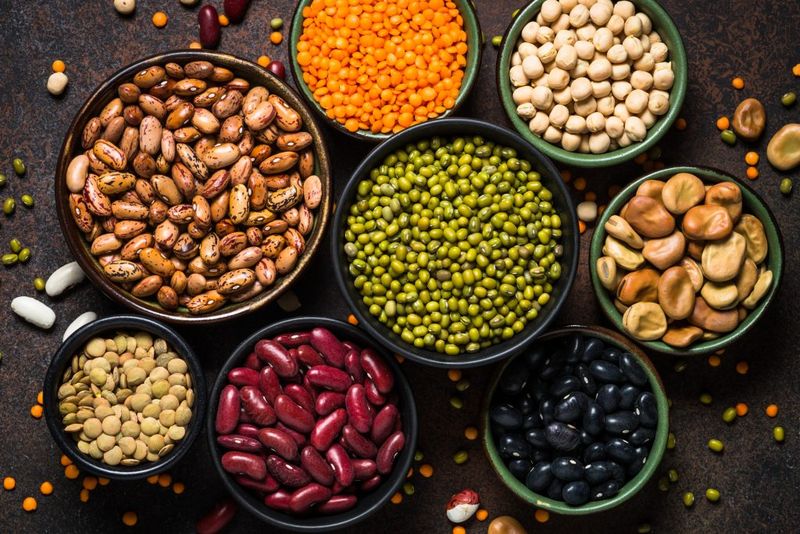Australia: Hope builds for Indian chickpea reopening

For the first time since 2018, India appears likely to open its door to Australian chickpea exports, and Australian traders are coming out unusually early with strong new-crop prices as an incentive to growers ahead of planting.
On faba beans, bulk shipments to Egypt are continuing at a steady pace, although containerised exports via the Red Sea have stopped due to the ongoing threat of Houthi attacks.
Bulk demand has seen prices for faba beans delivered port gain at least 10 percent in the past month, while lentils are trading sideways based on healthy containerised exports while bulk takes a breather.
All prices are in Australian dollars unless stated otherwise.
Ahead of India’s general election scheduled to take place by mid-year, the trade is anticipating Narendra Modi’s government will seek to redress low chickpea stocks by allowing some imports, with Australia the preferred supplier.
The mood has been gauged at the annual Global Pulse Confederation conference held in New Delhi last week.
Grain Trend director Sanjiv Dubey said the event featured extensive participation from Indian Government officials and industry, and the take-away was positive for Australia.
“There was broad consensus that India was 20-30pc short on chickpeas,” Mr Dubey said.
“There is a lot of pressure on government to set it right, but how they go about it is not known.”
In order to encourage domestic chickpea production, the Indian Government has been offering an attractive price to growers, with a tariff equating to around 66pc in place in recent years, well and truly enough to stop volume imports from Australia.
India’s rabi crop is harvested in March-April, and generally yields 10-12 million tonnes.
With government stocks 20-30pc below their ideal level and fast running out, the new crop appears highly unlikely to build reserves to a comfortable level.
“The price could well go berserk; 20-30pc short is a lot.”
Mr Dubey said the Indian Government was trying to control inflation to aid the consumer, as well as maximise returns to growers as a hugely important voter group, with the agricultural sector accounting for 55pc of the national economy.
As those in the global trade eye opportunities for chickpea exports to India, forward-selling opportunities have sprung up in Australia.
“Over the past three or four days, there have been trades; we have done a decent number of contracts…for Oct-Nov 2024.”
Current-crop prices delivered Goondiwindi packer are sitting at around $825/t, or $840-$850/t delivered Downs, while the new-crop bid is around $800/t for October-November delivery.
Planting of the Australian chickpea crop kicks off in Central Queensland in April and finishes in northern New South Wales in June.
“Traditionally, growers like the price of $800/t, and what we’re seeing is a very good possibility of much more planting.”
Low prices and weather damage have seen chickpeas trade at less than $600/t at times in recent seasons, which has seen area for the north’s main rotation crop slide.
Good subsoil moisture exists in most Qld and NSW chickpea-growing areas, and only lack of rain to wet the topsoil and good-quality planting seed are seen as limiting potential area.
“Now it’s all about the weather.”
Growers have been delivering faba beans to port in the past week or two at around $570-$575/t, up $50-$75/t over the past month as bulk exports to Egypt continue to make their way through the Red Sea to destination.
However, containers bound for Mediterranean ports, including Alexandria and Damietta in Egypt, are taking the long route around Africa due to continued safety concerns tied to Houthi attacks in the Red Sea.
“I think the container flow has dropped due to the Red Sea issue and resulting rates increases, and very lengthy transit times,” Agri-Oz Exports managing director Francois Darcas said.
This is being seen in container packers bidding well below bulk exporters, to reflect prohibitively expensive freight costs.
“Many bulk ships are still sailing through the Red Sea.
“It seems bulk ships will form the large majority of tonnage going to Egypt.”
Stems indicate four cargoes of faba beans to Egypt loaded in January, with at least one a month booked up to and including May.
“There has been steady farmer selling, although liquidity is much lower than during harvest.”
Hallmark-type lentils are trading at around $890/t delivered port, steady to $10/t lower than values seen in late January.
The flat market reflects the shipping stem’s focus on getting wheat and barley out of Victorian and South Australian ports in the next month or two.
While near-term bulk demand is flat, container packers are busy with lentils which are shipping without disruption to South Asia.
GeoCommodities broker Brad Knight said supply and demand are basically matched.
“Grower selling on lentils over the past four or six weeks has seen volume come trickling through; that seems to be suiting exporters,” Mr Knight said.
Some growers keen to generate cash flow without having to drive all the way from farm to port are seeing appeal in bids being posted by up-country container packers.
Read also
Wheat in Southern Brazil Impacted by Dry Weather and Frosts
Oilseed Industry. Leaders and Strategies in the Times of a Great Change
Black Sea & Danube Region: Oilseed and Vegoil Markets Within Ongoing Transfor...
Serbia. The drought will cause extremely high losses for farmers this year
2023/24 Safrinha Corn in Brazil 91% Harvested
Write to us
Our manager will contact you soon



